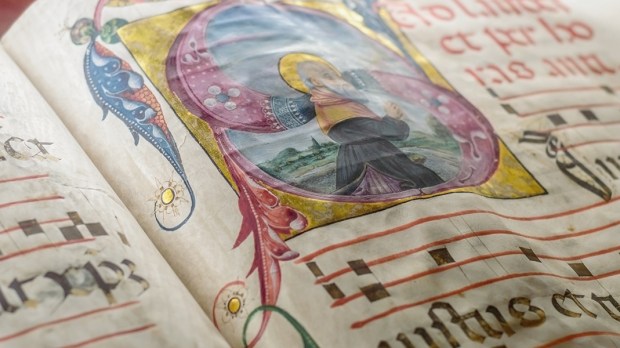Not too many people will be able to read the texts, but a perusal through some online medieval manuscripts will reveal pages that can nevertheless be fascinating to look at.
After years of digitizing projects in various libraries of the world, it’s easy to find medieval manuscripts online nowadays. The documents represent a way of life that is long gone — and as far removed as Jupiter and Saturn from the minds of many people today, who might communicate with one another through text messages but would rarely pick up a book.
In one respect, at least, they have that in common with medieval man: before Gutenberg, most people never saw a book, as they were painstakingly reproduced and prohibitively expensive.
But many books in those days were written on parchment or vellum, and there’s a fascinating video explaining the long process by which they came to be.
Because they were rare, many illuminated manuscripts ended up locked up in the libraries of monasteries or universities.
Now, however, many of them are available online. This article gives us a good list of places where we can begin exploring.
But with so many digitized manuscripts available, where do we begin? What do we look for? The script is often in Latin, Greek or other languages, and even if you can read those languages, the style of the script might not be easily legible.
Many of the websites that offer digitized manuscripts provide some context to give the casual browser some background. But if you feel lost, you might want to just browse until you find something aesthetically attractive. Try to zoom in on some of the calligraphy or illustrations, and remind yourself that these documents were not printed but written and drawn and painted. Often, a single person did this, not machines. What went into it? How was it done? How long did it take to finish just one page?
Meditating on what you see while thinking about these questions can bring about a sense of awe and wonder that can be just as fruitful as reading text.

